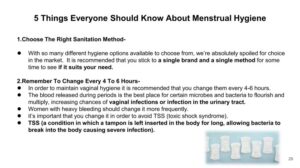Burnout recovery is a vital journey towards reclaiming your mental and physical well-being. As we dive into this topic, it’s essential to understand not just the symptoms of burnout, but also its profound effects on our daily lives. Many individuals face this struggle, making awareness and recovery strategies crucial for a healthier future.
The problem of burnout is more common than we might think, affecting various demographics and leading to significant psychological and physical challenges. By exploring effective recovery strategies and holistic approaches, we can empower ourselves to combat burnout and promote a balanced lifestyle.
Understanding Burnout
Burnout is a state of emotional, physical, and mental exhaustion caused by prolonged and excessive stress. It is often characterized by feelings of helplessness, hopelessness, and a lack of motivation. Recognizing the symptoms of burnout is crucial for early intervention and recovery. The symptoms of burnout can manifest in various ways, affecting both mental health and physical well-being. Common psychological effects include chronic fatigue, cynicism, and a decreased sense of accomplishment.
Physically, burnout may lead to headaches, gastrointestinal issues, and sleep disturbances. The World Health Organization recognizes burnout as an occupational phenomenon, highlighting its impact on productivity and overall health.
Symptoms of Burnout
Identifying the symptoms of burnout is essential for individuals and organizations to address the issue proactively. The following are key indicators of burnout:
- Emotional exhaustion: A persistent state of feeling drained and depleted.
- Cynicism: Increased negativity towards one’s job or colleagues, often accompanied by detachment.
- Reduced performance: A noticeable decline in productivity and efficiency.
- Physical symptoms: Headaches, fatigue, insomnia, and other stress-related ailments.
- Sense of ineffectiveness: Feeling incompetent or unaccomplished at work despite efforts.
Psychological and Physical Effects of Burnout
Burnout can have profound effects on both psychological and physical health. Understanding these effects can aid in recognizing the severity of the issue.Psychologically, burnout can lead to anxiety, depression, and a feeling of disconnection from work and personal life. This state of mind can hinder decision-making and creativity, ultimately impacting one’s overall quality of life. Physically, chronic burnout is linked to serious health issues such as cardiovascular disease, weakened immune response, and chronic fatigue syndrome.
Individuals experiencing burnout often report a surge in illnesses and a general decline in health.
Prevalence of Burnout in Different Demographics
Burnout is a widespread phenomenon that transcends various demographics, affecting diverse groups differently. Recent statistics reveal alarming trends in burnout rates across different sectors and age groups.The following statistics illustrate the prevalence of burnout:
- According to a Gallup poll, approximately 76% of employees experience burnout on the job at least sometimes.
- A study by the American Psychological Association found that younger workers (ages 18-29) reported higher levels of burnout compared to older generations.
- Healthcare professionals, especially nurses, report burnout rates as high as 70%, significantly impacting patient care.
- Teachers are also notably affected, with a reported 50% experiencing severe burnout symptoms due to high workloads and emotional stress.
Understanding these statistics is crucial for addressing burnout effectively and implementing supportive measures within different industries.
Strategies for Burnout Recovery
Burnout can feel overwhelming, but developing effective strategies for recovery can lead to a significant transformation in one’s emotional and physical well-being. Implementing consistent self-care practices, along with mindfulness techniques, can be a game changer in restoring balance to your life. Establishing a well-rounded work-life routine is also crucial in mitigating future burnout.
Self-Care Practices for Burnout Recovery
Engaging in self-care activities is vital for reducing stress and promoting mental health. Below are some essential self-care practices that can help combat burnout:
- Physical Activity: Regular exercise, such as walking, yoga, or swimming, can boost endorphins and improve mood. Aim for at least 30 minutes a day, five days a week.
- Healthy Eating: Consuming a balanced diet rich in fruits, vegetables, whole grains, and lean proteins supports brain health and stabilizes energy levels.
- Sleep Hygiene: Prioritizing quality sleep by maintaining a consistent sleep schedule can enhance overall well-being. Create a bedtime routine and limit screen time before sleep.
- Social Connections: Engaging with friends and family can provide emotional support. Make time to connect with loved ones regularly.
- Creative Outlets: Activities such as painting, writing, or playing music can be therapeutic and serve as an excellent way to express emotions.
Integrating Mindfulness and Meditation
Mindfulness and meditation can significantly alleviate symptoms of burnout by enhancing self-awareness and reducing stress. Here are some methods to incorporate these practices into daily life:
- Daily Meditation: Setting aside 10-15 minutes each morning or evening for meditation can clear the mind and center your thoughts. Use guided meditation apps for support.
- Mindful Breathing: Practicing deep, mindful breaths during stressful moments can calm the nervous system. Inhale deeply for four counts, hold for four, and exhale for four.
- Mindfulness in Daily Activities: Bring awareness to everyday tasks, such as eating or walking. Focus on the sensations and experience fully each moment.
- Body Scan: A body scan meditation can help you tune into physical sensations and release tension. Lie down comfortably, and mentally scan your body from head to toe.
Establishing a Balanced Work-Life Routine
Creating a balanced work-life routine is crucial to prevent future burnout. Implement the following strategies to achieve this equilibrium:
- Set Clear Boundaries: Define your work hours and stick to them. Communicate these boundaries to colleagues and family to minimize interruptions during personal time.
- Prioritize Tasks: Use a task management system to prioritize your work. Identify high-impact tasks and tackle these first, reducing feelings of overwhelm.
- Schedule Breaks: Incorporate regular breaks throughout the workday. Short walks or stretching can rejuvenate your mind and boost productivity.
- Limit After-Hours Work: Avoid checking emails or engaging in work-related tasks after hours to preserve personal time and promote relaxation.
Holistic Approaches to Recovery

Holistic approaches to burnout recovery recognize the interconnectedness of mind, body, and spirit. By addressing these three aspects through various practices, individuals can enhance their overall well-being and effectively combat burnout. This section explores the role of nutrition, alternative treatments, and the significance of social support in the recovery process.
Role of Nutrition in Overcoming Burnout
Nutrition plays a crucial role in mental health and the recovery from burnout. A balanced diet can affect energy levels, mood, and cognitive function. Consuming nutrient-dense foods helps to nourish the brain and body, facilitating better stress management and resilience. Key aspects of nutrition for overcoming burnout include:
- Whole Foods: Incorporating fruits, vegetables, whole grains, and lean proteins into daily meals provides essential vitamins and minerals that support mental clarity and emotional stability.
- Hydration: Drinking enough water is vital for maintaining energy and focus. Dehydration can lead to fatigue and hinder cognitive processes, exacerbating feelings of burnout.
- Healthy Fats: Omega-3 fatty acids found in fish, nuts, and seeds have been shown to reduce symptoms of depression and anxiety, which are often heightened during burnout.
- Mindful Eating: Practicing mindfulness during meals can enhance the eating experience, encouraging better digestion and a more positive relationship with food.
Alternative Treatments for Burnout Recovery
Exploring alternative treatments can be an effective way to recover from burnout. These practices often focus on relaxation, stress reduction, and promoting overall well-being. Some beneficial alternative treatments include:
- Acupuncture: This traditional Chinese medicine technique involves inserting thin needles into specific points on the body. It helps to balance energy flow, reduce stress, and alleviate symptoms of anxiety and depression.
- Yoga: Combining physical postures, breathing exercises, and meditation, yoga promotes relaxation and enhances mental clarity. Regular practice can improve resilience against stress and boost overall mood.
- Aromatherapy: Utilizing essential oils can greatly affect mental health. Scents like lavender and chamomile have calming properties, while citrus oils can elevate mood. Diffusing these oils or using them in massage can create a soothing environment conducive to recovery.
Importance of Social Support and Community Involvement
Social support and community involvement play vital roles in the recovery from burnout. Engaging with others can provide emotional comfort, reduce feelings of isolation, and foster a sense of belonging. Key elements of social support include:
- Building Connections: Strengthening relationships with friends, family, and colleagues can offer emotional support and practical assistance during challenging times.
- Participating in Group Activities: Involvement in community events, clubs, or social groups can create opportunities for connection and joy, which are essential for mental well-being.
- Seeking Professional Support: Mental health professionals, such as therapists or counselors, can provide guidance and strategies tailored to individual needs, helping to navigate the complexities of burnout recovery.
Conclusion

In conclusion, the path to burnout recovery involves a multifaceted approach that includes self-care, mindfulness, and community support. By integrating these practices into our lives, we can not only overcome burnout but also foster a lasting sense of well-being. Remember, recovery is a process, and taking the first step is often the most important part of the journey.
Essential FAQs
What are the primary symptoms of burnout?
Common symptoms include chronic fatigue, irritability, lack of motivation, and difficulty concentrating.
How long does burnout recovery typically take?
The recovery duration varies for each individual, but it often takes weeks or even months to fully heal.
Can burnout lead to physical health issues?
Yes, prolonged burnout can result in serious physical health problems such as cardiovascular disease and weakened immune response.
Is it necessary to seek professional help for burnout?
While self-care strategies can be effective, seeking professional help is advisable if burnout symptoms are severe or persistent.
What role does nutrition play in burnout recovery?
Nutrition is critical; a balanced diet can help support mental health and energy levels during recovery.





